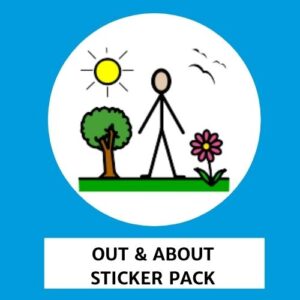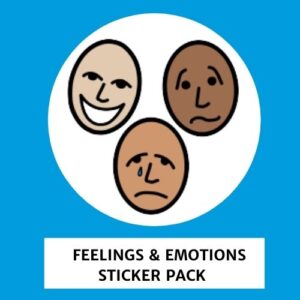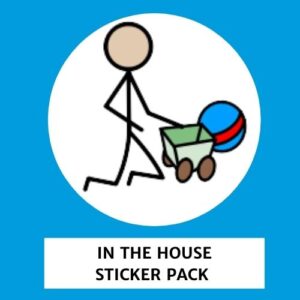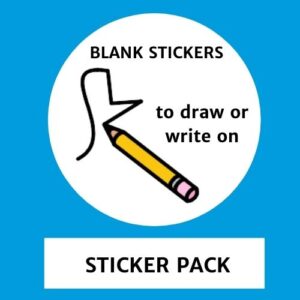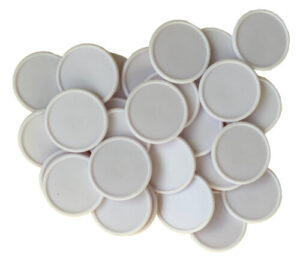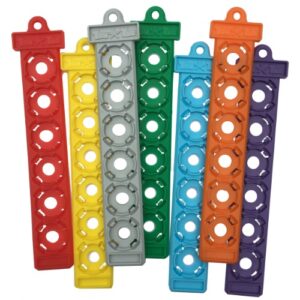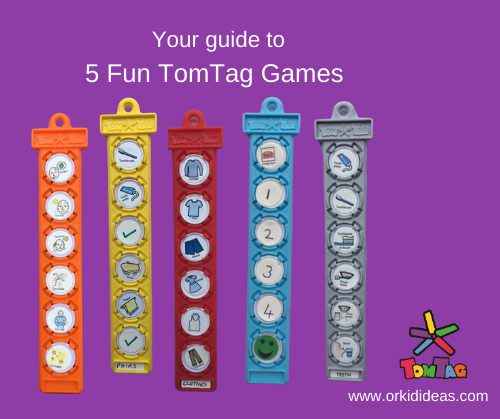
Play is one of the main ways that children learn and develop. There’s no reason why children with autism who use visual supports are any different. So why not bring play and fun games for children with autism into your visual supports too. To them they’re playing games, but you know that they’re getting some occupational therapy, speech activities and thinking skills thrown in. Games may also help children with autism engage more readily with using their visual supports. It’s a win-win!!
Here’s some of our ideas you could use to help your child engage with TomTag.
#1 Indoor I- Spy.
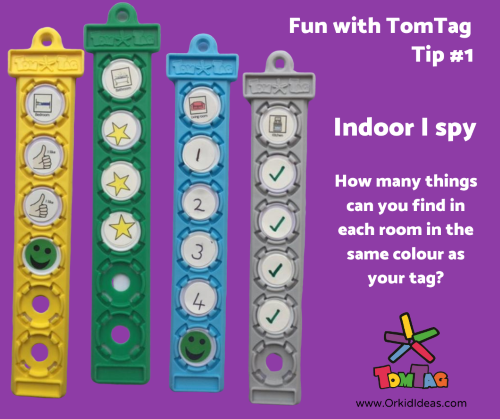 Stuck indoors? Why not encourage language and memory skills with a fun indoor I -Spy game.
Stuck indoors? Why not encourage language and memory skills with a fun indoor I -Spy game.
Instructions:
🌈Ask you child to choose a colour tag and room in the house.
👀Can they look round that room and find, name or point to items that are the same colour?
✔Click a reward button into the tag for each item found.
😊Praise them for their effort and move onto another colour and room.
In the examples shown, we used stickers (rooms and stars) from our In the house sticker pack. We drew the other symbols onto blank stickers.
#2 Outdoor I-Spy
 Use your daily walk to play I- Spy and spot things you may see in your city, town or village using a personalised TomTag checklist.
Use your daily walk to play I- Spy and spot things you may see in your city, town or village using a personalised TomTag checklist.
TomTag is also super portable and robust – ideal for taking with you when you’re out and about!
Instructions:
🗨Ask your child to suggest things they are likely to see on their walk – perhaps they can guess what order they will spot them in!
✍Make up the checklist together – we’ve used stickers from our Out and About sticker pack but you can just as easily draw or write on some blank stickers.
👀 On your walk, encourage your child to spot the things, find it on their tag and turn the button over. This shows they’ve seen that thing.
🧐Praise them for keeping their eyes open and being a good detective.
#3 Feelings & Emotions Charades
 Help your child understand, recognise and express their feelings and emotions with a simple game of charades.
Help your child understand, recognise and express their feelings and emotions with a simple game of charades.
No Oscar winning performances required!
Instructions:
💬Talk to your child about the feelings and emotions included in the game – choose ones that your child needs some help with.
🤏 Jumble up the feelings and emotions symbol buttons and ask your child to choose one for you.
😀Act out the feeling or emotion shown. Can they guess it? If so, pop it in the tag otherwise have another go.
🔁Swap places and ask your child to act out the feeling or emotion for you to guess.
We’ve used symbol stickers from our Feelings and Emotions sticker pack but you can easily draw or write on blank stickers.
#4 Categories and Pairs
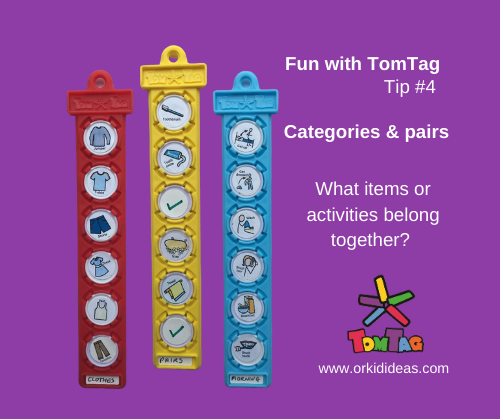 Develop vocabulary with a game of categories or matching pairs
Develop vocabulary with a game of categories or matching pairs
Instructions:
▶Categories
🤏Choose a category. For example, things to wear.
🧦Ask your child to find all the symbol buttons showing things that can be worn and click them into the tag.
🚿Repeat with a different category, e.g. things I need to do in a morning.
▶Pairs
🧼💧Ask your child to find the items that go together e.g. what do I need to clean my teeth or wash my hands?
We’ve used symbol stickers from our self-care sticker pack, but you can easily draw or write on blank stickers.
#5 Sequencing skills
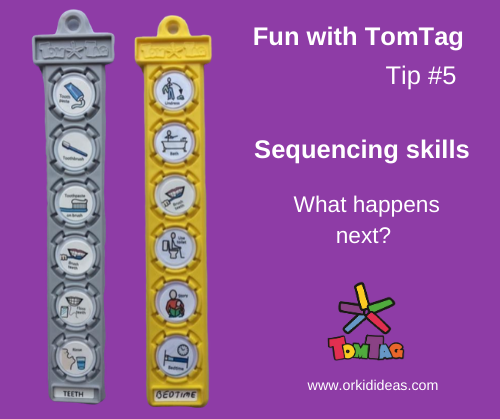 Practice sequencing skills with a simple game of “what happens next”.
Practice sequencing skills with a simple game of “what happens next”.
This game can also help reinforce familiar daily routines so it’s a win-win for everyone!
Here’s how to play the TomTag way.
🤏Choose an activity sequence
🤔Jumble up the symbol buttons and ask your child to find the one they think they should come first, second etc.
✔Click them into the tag into that order and ask them to check it is correct.
🗣Call out an activity and ask them to find it in the tag and turn the button over to show they have completed the activity.
Depending on your child’s ability, you could take out a few of the steps and build up to the longer 6-step sequence. We’ve used symbol stickers from our two popular mini-kits: teeth brushing and morning and evening routine.
Do you have any tips for games you can play with your TomTag? Please let us know in the comments below.
Useful resources

